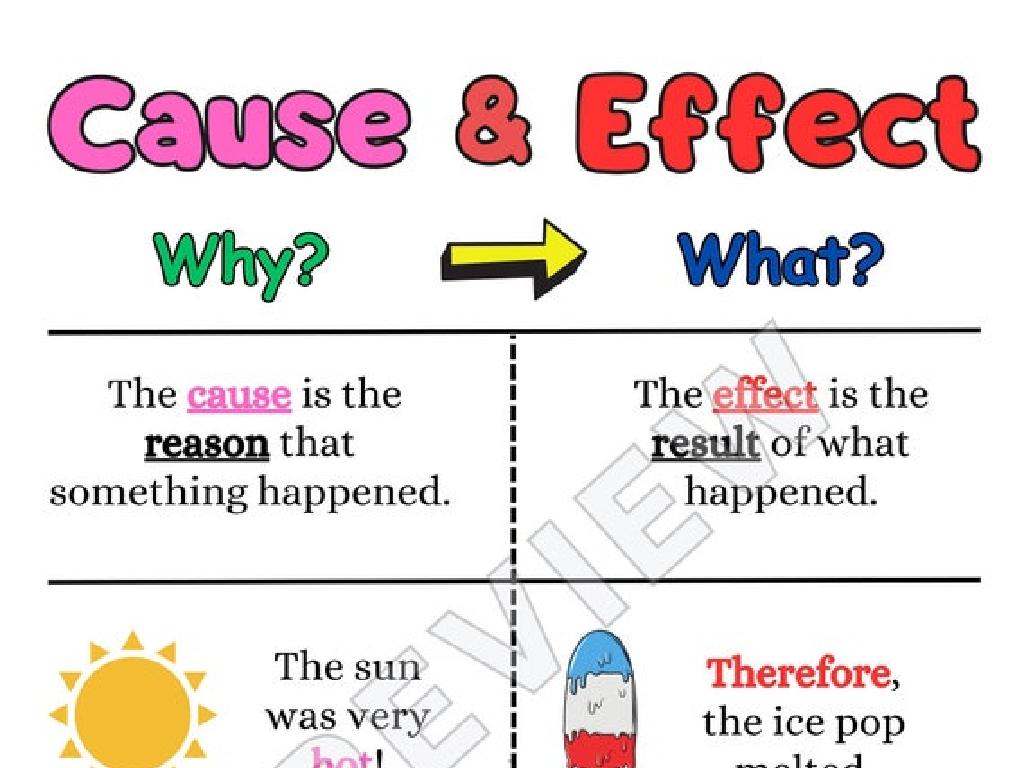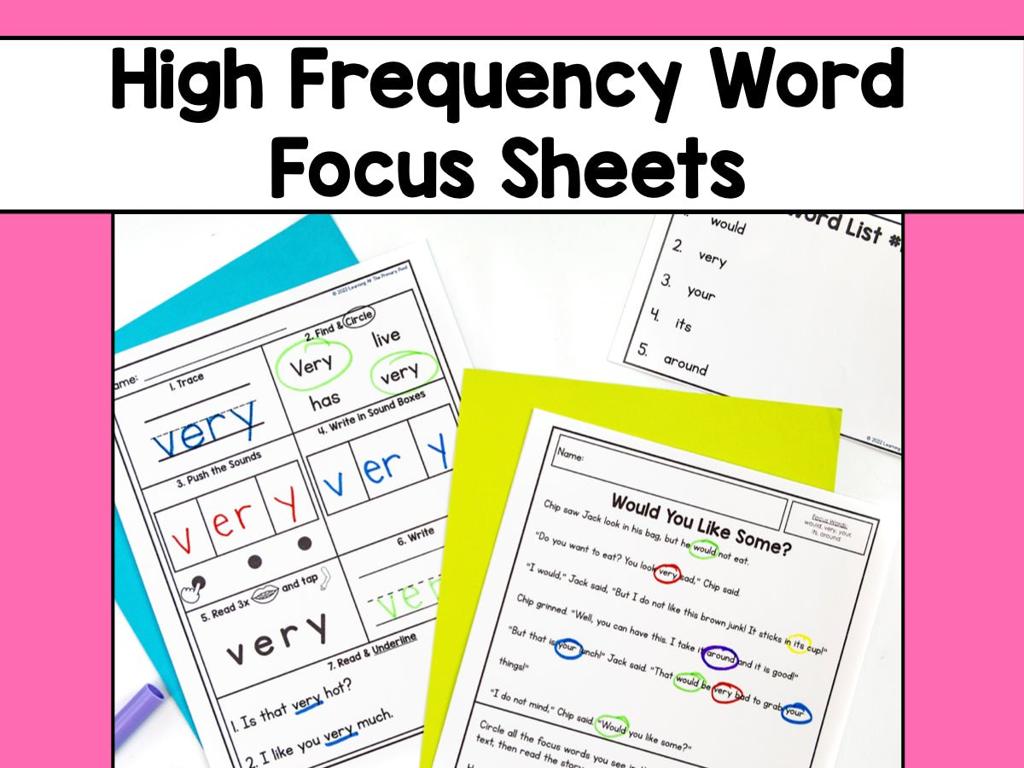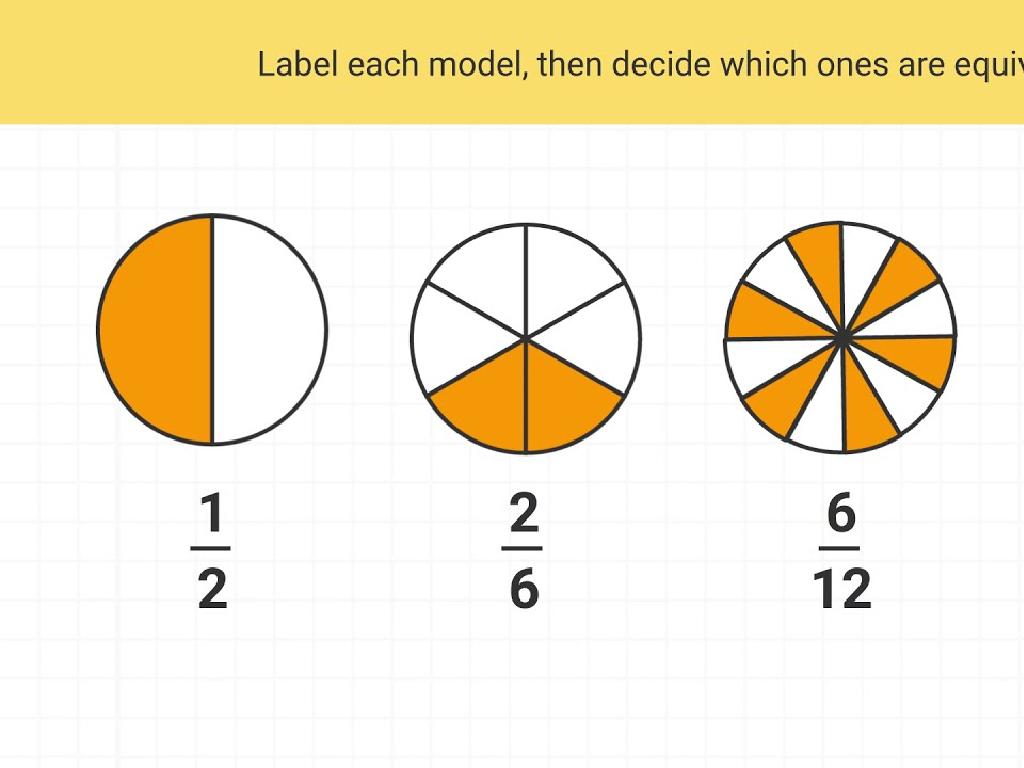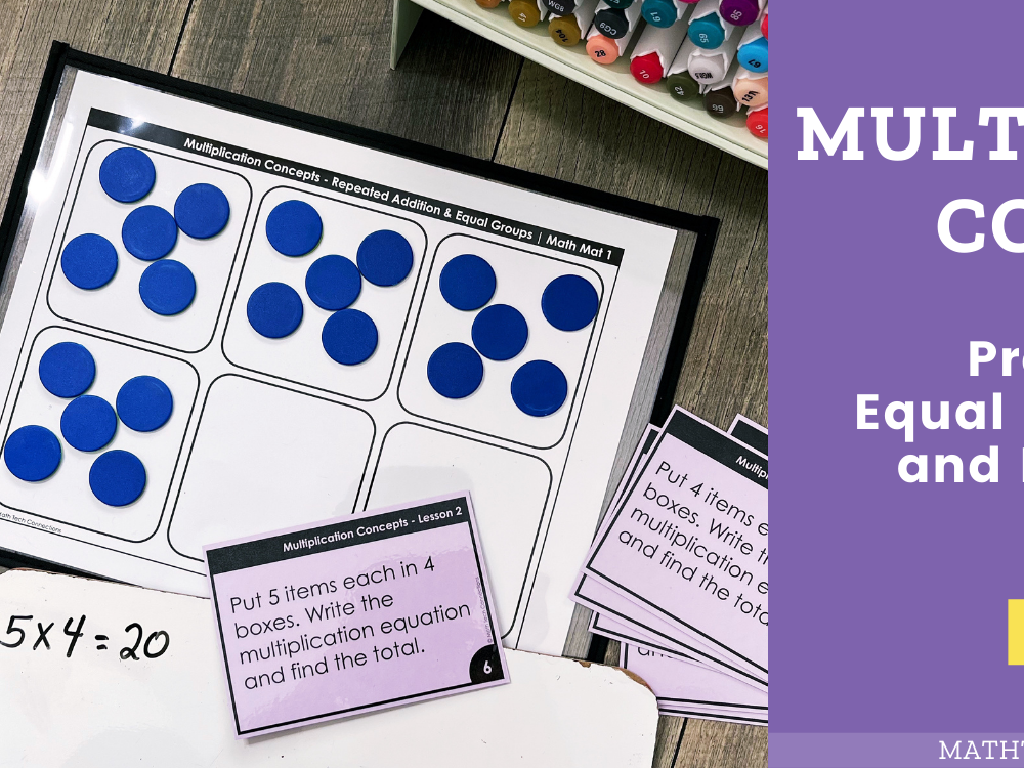Use Models To Add A Multiple Of Ten And A One-Digit Number
Subject: Math
Grade: First grade
Topic: Addition: Two Digits
Please LOG IN to download the presentation. Access is available to registered users only.
View More Content
Welcome to Addition!
– Learn to add numbers today
– Use models for ten and one-digit
– Like adding 10 + 3 using blocks or drawings
– Adding tens to one-digit numbers
– Example: 10 + 5. Picture 10 as a bundle and 5 as single items
– Become an addition expert
|
This slide introduces the concept of addition to first graders by using visual models, which are crucial for their understanding of combining quantities. Start by explaining that today’s lesson will focus on adding a multiple of ten to a one-digit number. Demonstrate with models such as blocks or drawings to show 10 as a group and then add one-digit numbers to it. For example, show 10 as a bundle of sticks and then add 5 individual sticks to count all together. Encourage the students to visualize the process and use their fingers or objects to practice this addition. The goal is for them to grasp the concept of ‘ten’ as a base unit in our number system and how to combine it with single units.
Understanding Addition
– Addition combines numbers
– It’s like adding apples in baskets to find the total apples
– Like joining groups of items
– Imagine 2 piles of toys becoming 1 big pile
– Adding makes numbers grow
– If we have 3 candies and get 2 more, we then have 5 candies!
– Practice with ten and ones
– Add 10 (a ten-block) to 1 (a single block)
|
This slide introduces the concept of addition to first graders by relating it to their everyday experiences, such as combining toys or candies. It’s important to use tangible examples that make sense to them, like adding apples in baskets. Emphasize that when we add, the total number of items increases. Use visual aids like blocks or counters to demonstrate adding a multiple of ten to a one-digit number, showing how a group of ten items can be combined with a single item to create a new total. Encourage the students to practice with different combinations of ten-blocks and single blocks to reinforce the concept.
Understanding Tens and Ones
– Numbers have tens and ones
– A ten equals 10 ones
– Think of a ten as a bundle of ten single units
– Use blocks to show tens and ones
– Blocks can represent tens (longs) and ones (cubes)
– Drawing tens and ones
– Draw a long stick for a ten, dots for ones
|
This slide introduces the concept of place value, specifically focusing on tens and ones, which is fundamental in understanding how to add a multiple of ten to a one-digit number. Emphasize that every number is made up of tens and ones. A ‘ten’ is simply a group of 10 ‘ones’ bundled together. Using manipulatives like blocks can help students visualize this concept; a long block can represent a ‘ten’, and a single small cube can represent ‘one’. Alternatively, students can draw representations, using a line to symbolize a ‘ten’ and dots for ‘ones’. This visual and hands-on approach aids in solidifying their understanding of place value, which is crucial for their success in addition and other math operations.
Adding a Ten to a One-Digit Number
– Understanding adding a ten
– When we add 10 to a number, we get a bigger number.
– Ten stays the same
– The number 10 doesn’t change, it’s like a building block.
– Add the one-digit number
– If we have 10 and add 3, we get 13. The 3 goes right after the 1.
– Let’s practice together!
|
This slide introduces the concept of adding a multiple of ten to a one-digit number. Emphasize that when we add ten to any one-digit number, we are essentially increasing the number by one ten. The ten is our base or ‘building block’, and we are adding the one-digit number to it. For example, if we start with 10 and add 2, we get 12. It’s important to use visual aids like blocks or drawings to help students visualize this concept. During the practice, guide them through several examples, and encourage them to use their fingers or manipulatives to count. This will help solidify their understanding of the addition process.
Adding Multiples of Ten with Single Digits
– Start with one ten (10)
– Add three ones to ten
– Combine ten and ones together
– Putting 10 and 3 together makes a new number
– Guess the result of 10 + 3
– Is it more than 10? Less than 10? Or the same?
|
This slide is aimed at helping first graders understand the concept of addition by combining multiples of ten with single-digit numbers. Start by explaining that ‘ten’ is a group of ten ones. Show them visually, if possible, what ten ones look like. Then, introduce three individual ones. Ask the students to visualize putting these ones together with the ten. Encourage them to make a guess before revealing the answer to 10 + 3. This exercise will help them grasp the basic concept of addition and understand that adding a single-digit number to a multiple of ten is simply adding to the ones place. For the activity, you can use physical objects like blocks or drawings to represent the tens and ones, making the concept more tangible for the students.
Let’s Practice Adding!
– Try adding ten to a one-digit number
– Use blocks or drawings for help
– If you have 10 and add 3, show it with blocks or a picture
– The ten stays the same
– Just add the one-digit number
– For 10 + 5, the ten is still 10, we make it 15
|
This slide is an activity for students to practice the concept of adding a multiple of ten to a one-digit number. Encourage students to use physical blocks or draw representations to visualize the addition process. Remind them that when adding a one-digit number to a multiple of ten, the number in the tens place remains unchanged, and they only need to add the one-digit number to the ones place. For example, with 10 blocks and adding 3 more, they should see 13 blocks in total. Provide several examples and allow students to work through the problems at their own pace, offering assistance as needed. Possible activities could include using different colored blocks to represent tens and ones, drawing out the numbers, or using number lines.
Class Activity: Adding with Base-Ten Blocks
– Pair up for block addition
– Each pair receives a block set
– Add one-digit numbers to a ten
– Example: 10 (ten-block) + 3 (one-blocks) = 13
– Discuss your findings with the class
|
This activity is designed to help first graders visualize the concept of addition by using base-ten blocks. By working in pairs, students can collaborate and assist each other in understanding. Provide each pair with a set of base-ten blocks including ten-blocks and one-blocks. Guide them to start by placing a ten-block (representing a multiple of ten) and then adding one-blocks (representing one-digit numbers) to it. Encourage them to explore different combinations, such as 10+1, 10+2, up to 10+9. After the activity, have each pair share their results and methods with the class to reinforce their learning and to demonstrate the various possible sums. Prepare to offer assistance and ensure that each student is engaged and comprehending the addition process.
Adding Tens and Ones
– Review: Adding ten to a one-digit
– When we add 10 to 1, we get 11
– Ten stays the same, add the one-digit
– The number 10 is our base, and we add 1, 2, 3, etc., to it
– Use blocks to model our addition
– Blocks show us how 10 + 1 is the same as one 10-block and one 1-block
– Practice with different numbers
– Try adding 10 to other numbers like 2, 3, or 4 and see what happens
|
This slide is a review of the concept of adding a multiple of ten to a one-digit number. Emphasize that when we add ten to any one-digit number, the ten doesn’t change; we simply add the one-digit number to it. Using physical models such as blocks can help students visualize this addition process. For example, a ten-block represents the number ten, and single blocks represent one-digit numbers. During the lesson, encourage students to practice this concept with different numbers to solidify their understanding. Have them use blocks to build the numbers and then count to see the new number they’ve created. This hands-on activity will help reinforce the concept and ensure they grasp the idea of addition in a tangible way.
Conclusion and Homework: Adding Tens
– Excellent work in today’s class!
– Homework: Add ten to 1-digit numbers
– Practice with numbers like 10 + 3, 10 + 7, etc.
– Write your answers in your notebook
– Show your work for each addition problem
– Bring homework for review tomorrow
|
Today’s class focused on understanding how to add multiples of ten to one-digit numbers. For homework, students are asked to reinforce this concept by practicing with various one-digit numbers. Encourage them to write down each step of their work to show their understanding. Remind students to bring their homework to class the next day for review, which will help them solidify their skills and allow for any necessary clarification. This will also provide an opportunity to celebrate their efforts and progress.






